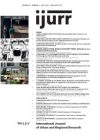In this article, I translate local narratives about one particular event into a reading of a city as a whole. The city concerned is Butembo, a secondary city in the North Kivu province (DRC). The incident relates to the appearance of a foreign flower in the late 1950s. This water hyacinth — named ‘Congo ya Sika’, which means ‘the New Congo’— caused severe damage to the waterways of the Belgian Congo, and the colonial authorities mobilized the population in an effort to eradicate the plague. Pamphlets and posters were spread, with the request to destroy the pictured flower when spotted. People of Butembo reacted in a most particular way to the appearance of these posters in their city, ascribing the Congo ya Sika flower mythical proportions right from the start. In their interpretation, the appearance of the flower was a sign that ‘the new Congo’ would rise in their town, endowing their place exclusively with a particular force. I scrutinize the myth’s origin and analyse its social meaning, in an effort to gain a better understanding of Butembo’s society. Throughout my analysis, special attention is paid to (self) representation, and to noise stuck to colonial messages.
Details
Written by:
KRISTIEN GEENEN
Digital Object Identifier (DOI)
10.1111/j.1468-2427.2011.01084.x
About DOI
Read full article as PDF
Read full article as HTML
See the references for this article
